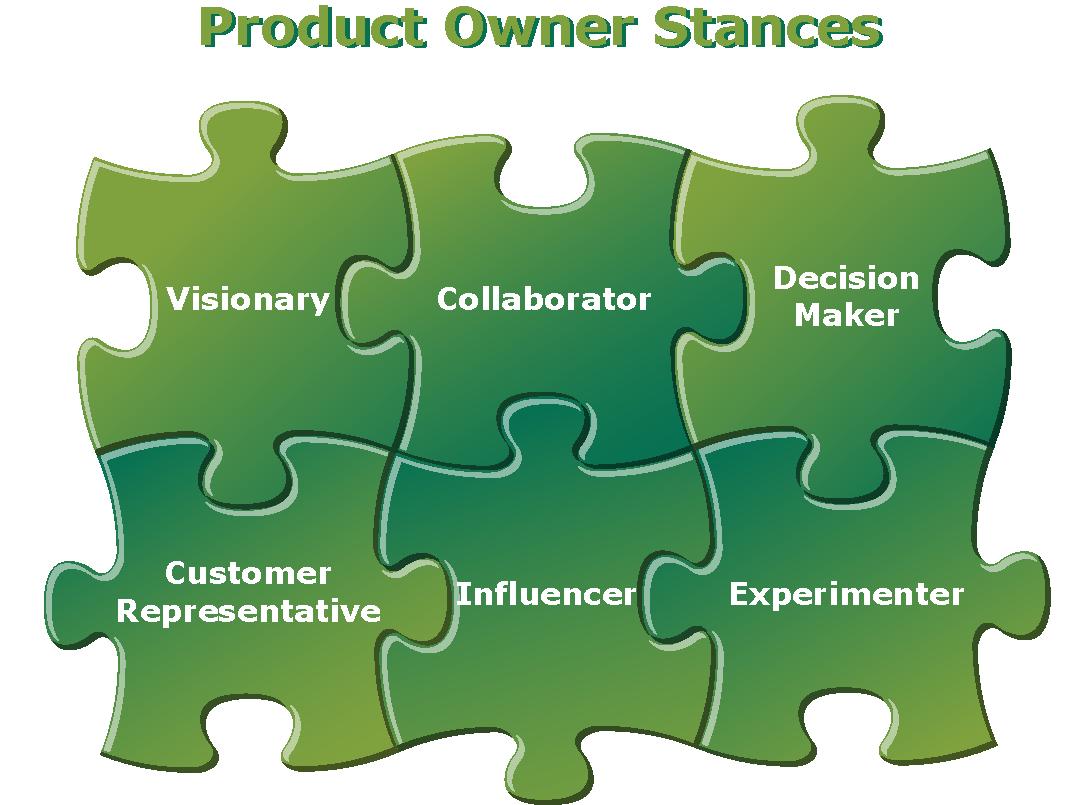The Accountabilities of the Product Owner
As described in the Scrum Guide, a Product Owner is accountable for maximizing the value of the product resulting from the work of the Scrum Team. How this is done may vary widely across organizations, Scrum Teams and individuals.
As a member of the Scrum Team, the Product Owner provides clarity to the team about a product’s vision and goal. All work is derived and prioritized based on the Product Goal in order to deliver value to all stakeholders including those within their organization and all users both inside and out. Product Owners identify, measure and maximize value throughout the entire product's lifecycle.
What does a Product Owner do?
The Product Owner is accountable for effective Product Backlog management, which includes:
- Developing and explicitly communicating the Product Goal
- Creating and clearly communicating Product Backlog Items
- Ordering Product Backlog Items
- Ensuring that the Product Backlog is transparent, visible and understood
The Product Owner may do this work or delegate the responsibility to others on the Scrum Team. Regardless of who does the work, the Product Owner remains accountable for it being accomplished and for the value delivered.
Far beyond Product Backlog management, it is critical for the Product Owner to earn the respect of the entire organization in order to get the support they need for the decisions they make. This is key to a Product Owner’s success. These decisions need to be transparent in the Product Backlog, and through the Increment of work shared at the Sprint Review.
Remember, the Product Owner is one person, not a committee. They also represent the needs of many stakeholders in the Product Backlog. If someone in the organization wants a change in the Product Backlog, they need to discuss this with the Product Owner and try to convince them. But at the end of the day, the Product Owner makes the decision. The Product Owner should also be getting feedback from customers on the product.
Product Owner Stances
 There are several preferred stances the Product Owner can take in order to achieve their ultimate goal of maximizing value. These stances include the Visionary, Collaborator, Customer Representative, Decision Maker, Experimenter and Influencer. For example, the Product Owner sometimes takes the stance of the Visionary when clearly communicating the product vision, strategy, business goals, and objectives with all the relevant parties; they play the part of the Collaborator when they work with the Scrum Team to define goals; or they act as a Decision Maker making all kinds of decisions on a daily basis.
There are several preferred stances the Product Owner can take in order to achieve their ultimate goal of maximizing value. These stances include the Visionary, Collaborator, Customer Representative, Decision Maker, Experimenter and Influencer. For example, the Product Owner sometimes takes the stance of the Visionary when clearly communicating the product vision, strategy, business goals, and objectives with all the relevant parties; they play the part of the Collaborator when they work with the Scrum Team to define goals; or they act as a Decision Maker making all kinds of decisions on a daily basis.
The Accountabilities of the Product Owner can often be interpreted incorrectly as well and there are several misunderstood stances that are patterns that have been seen within organizations, which include the Product Owner being viewed as the Story Writer, Project Manager, Subject Matter Expert, Clerk, Gatekeeper or Manager.
Learning Opportunities for Product Owners
There are many ways to learn as a Product Owner, from courses to certifications and also our Product Owner Learning Path for self study. Explore these opportunities:


